Shipping Container Building Ontology
1. Introduction
This project proposes an ontology based on the domain building system made of shipping containers.
• Purpose – The purpose of this project is the conceptual design of shipping container building, focusing on structural engineering aspects.
• Scope – Building physical components, used materials, possible building usages and the relationships among them are the scope of this project.
• Intended end-users – Designers, engineers, architects who are involved in the design process could be the potential intended end-users of this ontology.
• Intended use – This ontology is capable of being used for parametric modeling in structural design.
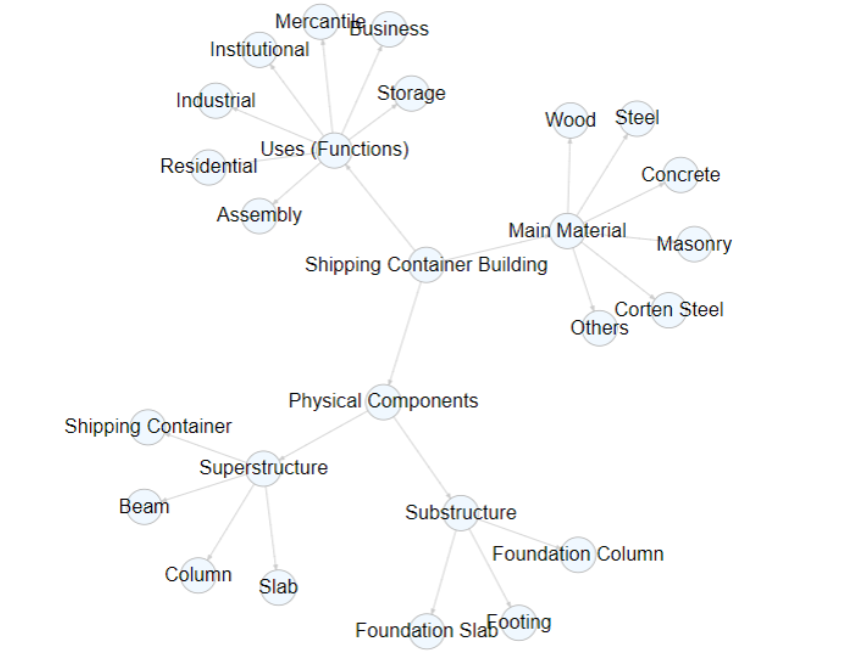 Figure 1 : Rough system sketch of shipping container building system
Figure 1 : Rough system sketch of shipping container building system
2. Background Research
Based on research on design principles of shipping container buildings(Mohammad Ataei, 2016; Antoni Willem Botes, 2013;Pakinam Nabil Barakat, 2022; Kevin Giriunasa, Halil Sezena, Rebecca B. Dupaix, 2012; Hamidul Islam, Guomin Zhang, Sujeeva Setunge, Muhammed A. Bhuiyan, 2016 ), a rough graphical sketch of the domain is shown in Figure 1.
Like conventional building, the shipping container building system also has two sets of major physical structures; substructure and superstructure. Under substructure category, there are slabs(for slab type foundation like raft-slab), column(along with footing) and footing(e.g, combined, raft, isolated) (Shigeru Hikone, Masaki Tokubuchi, 2011; Ahmed Hosney Radwan, 2015; S. M. Shuttleworth, N. De Koker, R. S. Walls, 2021). Moreover components of superstructure are column, beam, shipping container and slab. Main materials such as concrete, steel, corten steel(used to construct shipping containers), masonry, wood and others(Kevin Giriunasa, Halil Sezena, Rebecca B. Dupaix, 2012; Hamidul Islam, Guomin Zhang, Sujeeva Setunge, Muhammed A. Bhuiyan, 2016). Buildings constructed including shipping containers can be used for residential, institutional, assembly, business, mercantile, industrial and storage purposes(source: wikipedia).
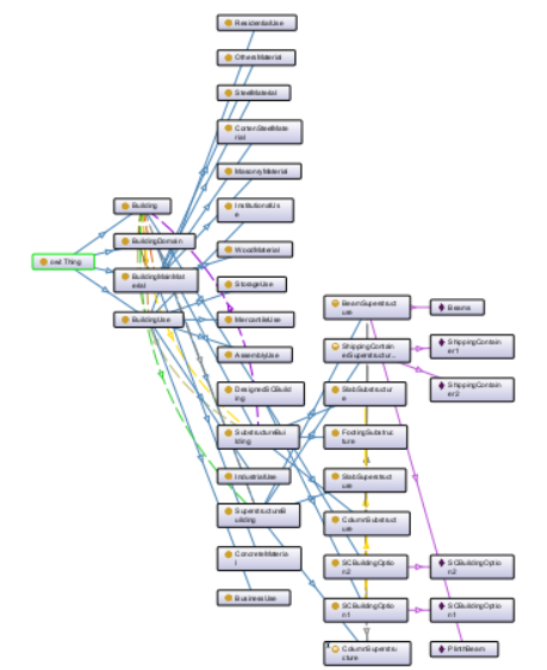 Figure 2 : Visual representation of developed ontology in Ontograf
Figure 2 : Visual representation of developed ontology in Ontograf
3. Methodology; How is ontology developed
The methodology followed to develop this ontology is described in 7 steps( Natalya F. Noy, Deborah L. McGuinness, 2001).
3.1. Determination of domain and scope of ontology
After deciding the domain(shipping container building system), a mind mapping of the purpose(described in section1) of this specific ontology is done. Understanding what exactly needed to achieve gave a clear boundary to scope of the ontology.
3.2. Search for existing ontology
A thorough background research is done to get existing ontologies based on building systems and shipping container buildings, so that it can give a peripheral foundation for developing ontology. No systematic ontology is found in this step, however conceptual ideology is developed from background research.
3.3. Identification of concepts and relationships
At first only key concepts(classes) are focused. And then started to fill out relationships(properties) among concepts relevant to the domain as much as possible..
3.4. Modelling classes and class hierarchy in Protégé
To develop class hierarchy a combination method is adopted. So class hierarchy is modeled as a combination of both top-down and bottom-up approaches.
3.5. Defining properties of classes in Protégé
Slots(Object Properties) give more detailed information. So the maximum number of relevant properties of classes which come under the scope is modeled. Object properties include relationships among classes.
3.6. Defining data properties, domain and range
After defining object properties, both of its domains and ranges are given. In order to describe object properties, varieties of value-types are necessary e.g, string, number and instances are specified in this step.
3.7. Creating instances
As a next step many individual instances are added.
3.8. Adding constraints
Logical constraints are added such as, existential constraints(e.g, hasSuperstructure some BeamSuperstructure, hasSuperstructure some ColumnSuperstructure).
3.9. Validate relationships
In this step ensuring hierarchy, transitivity and every relationship we have created are done.
Modelling the Shipping Container Building System using modelling tool Protégé.
As per the decomposition logic explained (Markus Krötzsch, Frantisek Simanci, Ian Horrocks, 2013), an ontological modelling based on shipping container building system is built in Protégé.
3.1. Results; Visualization
The created ontology is visualized using the plugin called Ontograf in Protégé and it is illustrated in Figure 2.
3.2. Results; Reasoning
Reasoning is done using the Pellet plugin in Protégé. After this a number of populated Property Assertions are seen as shown in Figures 3-10.
 Figure 3: Properties inferred by SCBuildingOption1 – SCBuildingOption1
Figure 3: Properties inferred by SCBuildingOption1 – SCBuildingOption1
 Figure 4: Properties inferred by SCBuildingOption2 – SCBuildingOption2
Figure 4: Properties inferred by SCBuildingOption2 – SCBuildingOption2
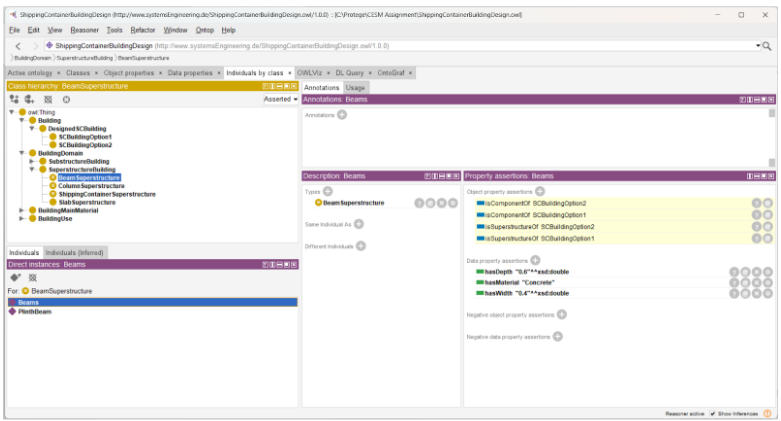 Figure 5: Properties inferred by BeamSuperstructure- Beams
Figure 5: Properties inferred by BeamSuperstructure- Beams
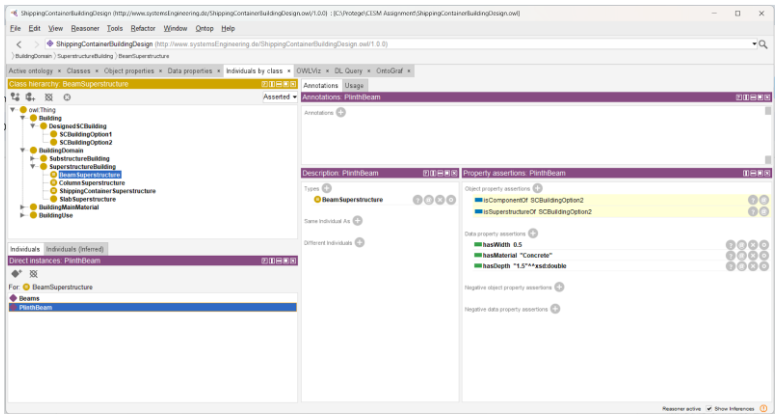 Figure 6: Properties inferred by BeamSuperstructure- PlinthBeam
Figure 6: Properties inferred by BeamSuperstructure- PlinthBeam
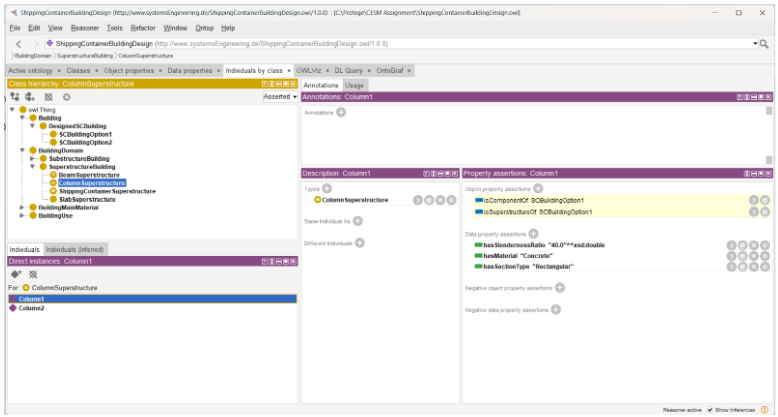 Figure 7: Properties inferred by ColumnSuperstructure- Column1
Figure 7: Properties inferred by ColumnSuperstructure- Column1
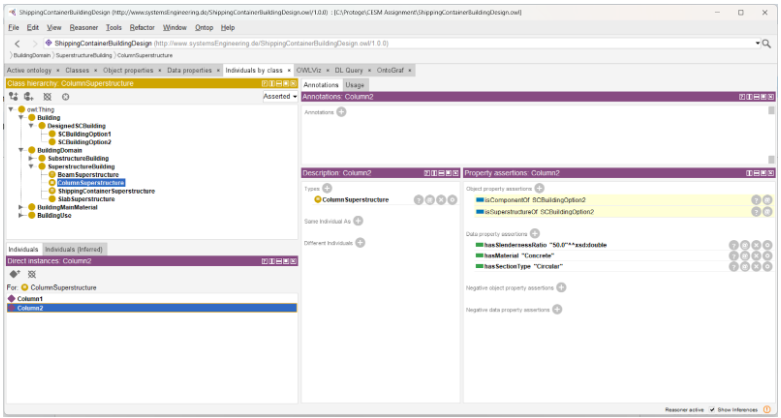 Figure 8: Properties inferred by ColumnSuperstructure- Column2
Figure 8: Properties inferred by ColumnSuperstructure- Column2
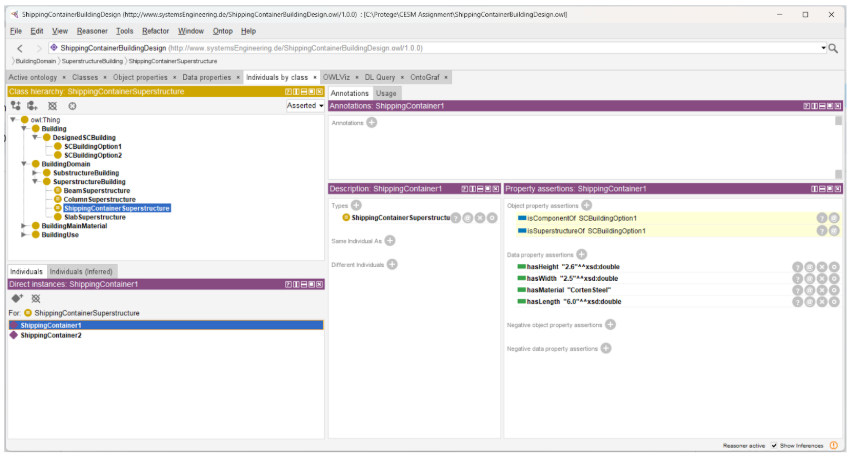 Figure 9: Properties inferred by ShippingContainerSuperstructure- ShippingContainer1
Figure 9: Properties inferred by ShippingContainerSuperstructure- ShippingContainer1
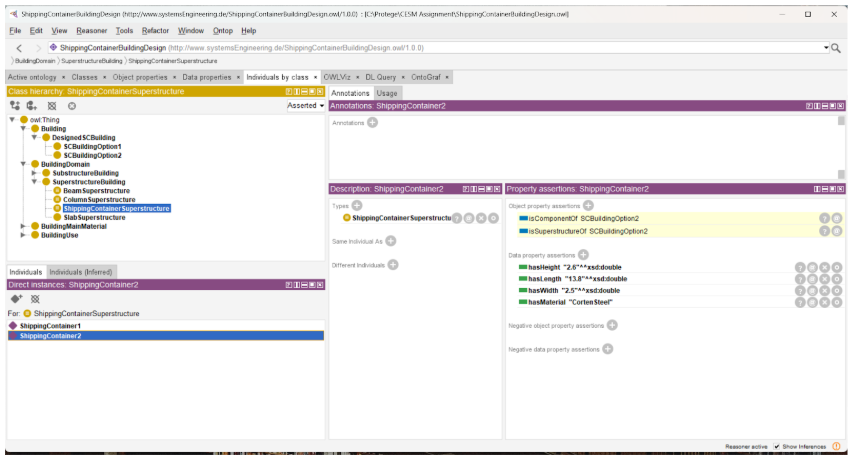 Figure 10: Properties inferred by ShippingContainerSuperstructure- ShippingContainer2
Figure 10: Properties inferred by ShippingContainerSuperstructure- ShippingContainer2
Logical axioms and Applications
Table No. 1: Logical axioms and applications
| Logical Axiom | Applications in Ontological Model |
| Class Hierarchy (subclass relationships) | Represented the hierarchical structure of the system (e.g., “Substructure” and “Superstructure” as subclasses of “BuildingDomain”). This helps in organizing knowledge and understanding relationships. |
| Existential Restriction (∃) | Used to define necessary components or materials for a class (e.g., “Building” must have “Substructure”,”Building” must have “MainMaterial”). Ensures every building has the required components/materials. |
| Universal Restriction (∀) | Restricted certain materials to specific uses (e.g., “SCBuildingOption1″ have atleast one “Beams”). Ensures consistency across the ontology. |
| Disjoint Classes | Declared disjointness among sibling classes (e.g., “BuildingMainMaterial” and “BuildingUse”). Prevents overlap of incompatible entities and ensures logical consistency. |
| Object Properties | Defined properties to link components and materials (e.g., hasMainaterial, hasUse). Helps in mapping the relationships between structural elements and their associated materials or uses. |
| Data Properties | Added numerical or textual properties (e.g., hasDepth, hasOccupancyType). Facilitates quantitative reasoning and parametric modeling. |
| Domain and Range of Properties | Assigned specific domains and ranges for relationships (e.g., the domain of hasUse is “Building,” and its range includes “BuildingUse”). Ensures valid mappings. |
| Instances | Enables case-based reasoning or querying specific instances. (e.g., ShippinContainer1, Column2, Beams). |
| Transitive Properties | Establishes logical consistency across relationships. (e.g., isComponentOf and hasComponent) It states non explicit relationships among object properties. |
4. Engineering Examples of Ontology
4.1. Designing Modular Shipping Container Building for Urban Housing
Scenario: As rapid urbanisation is not so uncommon today, cities need efficient housing methodology. Modular housing using shipping containers has a potential to become a trending solution to the housing crisis happening in cities like Berlin. Cost effectiveness, convenient assembly and disassembly are appealing features of this solution.
Use case: Engineers and designers could use this ontology to identify materials (steel, concrete, corten steel )and components used for constructing shipping container homes. Using this developers can create parametric models and provide necessary information for structural analysis.
4.2. Shipping container as a Sustainable Building
Scenario: In the modern world there is a growing need for sustainable construction. Shipping container buildings do an amazing job, not only because they are saving time and manpower, but also minimize carbon footprint by promoting reusing current resources.
Use case: This ontology can help engineers to understand a shipping container building system and pave ways to develop ideas to create energy efficient sustainable building by choosing sustainable materials like recycled concrete, eco-friendly steel, and wood. Multiple design options and materials together support engineers to create both alternate designs and repurposed or multipurpose building blueprints.
4.3. Designing Modular Buildings for Disaster Relief
Scenario: Natural disaster prone regions need rapid ways for rehabilitation. Shipping containers can become the most fast and convenient option to solve this situation. It is durable and safe.
Use case: Ontology model will provide information to select suitable materials and structures including shipping containers. This model can give a firm foundation for the parametric modeling and structural design criterias.
4.4. Retrofitting of existing building using Contemporary Materials
Scenario: When family expands, requirements for spacing might also increase. Instead of going for a bigger living option, retrofitting the current building incorporating shipping containers can solve the issue smarter.
Use case: Engineers can refer to this ontology to broaden their knowledge in contemporary materials and shipping container buildings. By associating both knowledge a novel solution to retrofit existing buildings can be done.
[1] Mohammad Ataei, 2016, Design of two story shipping container building, Master thesis work.
[2] Antoni Willem Botes, 2013, A feasibility study of utilising shipping containers to address housing backlog in Africa.http://hdl.handle.net/10019.1/85714
[3] Pakinam Nabil Barakat, 2022, Reshaping Future Architecture Approaches Using Shipping Containers: Student Housing as a Case Study, International Journal of Sustainable Development and Planning, https://www.researchgate.net/publication/366943884
[4] Kevin Giriunasa, Halil Sezena, Rebecca B. Dupaix, 2012, Evaluation, modeling, and analysis of shipping container building structures, Engineering Structures 43 (2012) 48–57, https://doi.org/10.1016/j.engstruct.2012.05.001
[5] Hamidul Islam, Guomin Zhang, Sujeeva Setunge, Muhammed A. Bhuiyan, 2016, Life cycle assessment of shipping container home: A sustainable construction, Energy and Buildings 128 (2016) 673–685, https://doi.org/10.1016/j.enbuild.2016.07.002
[6] Shigeru Hikone, Masaki Tokubuchi, 2011, Temporary Multi-storey Container House after Earthquake and Tsunami Disaster, IABSE Symposium Report 102(20):1699-1706, http://dx.doi.org/10.2749/222137814814067950
[7] Ahmed Hosney Radwan, 2015, International Journal of Scientific and Engineering Research 6(11):1562-1577
[8] S. M. Shuttleworth, N. De Koker, R. S. Walls, 2021, Insulation Resistance Time Reference Curves for Specifying Passive Fire Protection for Modular Structures from Shipping Containers, https://doi.org/10.1007/s10694-021-01143-9
[9] https://en.wikipedia.org/wiki/List_of_building_types
[10] Natalya F. Noy, Deborah L. McGuinness, 2001, Ontology Development 101: A Guide to Creating Your First Ontology, https://protege.stanford.edu/publications/ontology_development/ontology101.pdf
[11] Markus Krötzsch, Frantisek Simanci, Ian Horrocks, 2013, A Description Logic Primer, https://arxiv.org/abs/1201.4089
Main Page I Introduction I Individual Systems I Integrated Ontology I Integrated Parametric Model